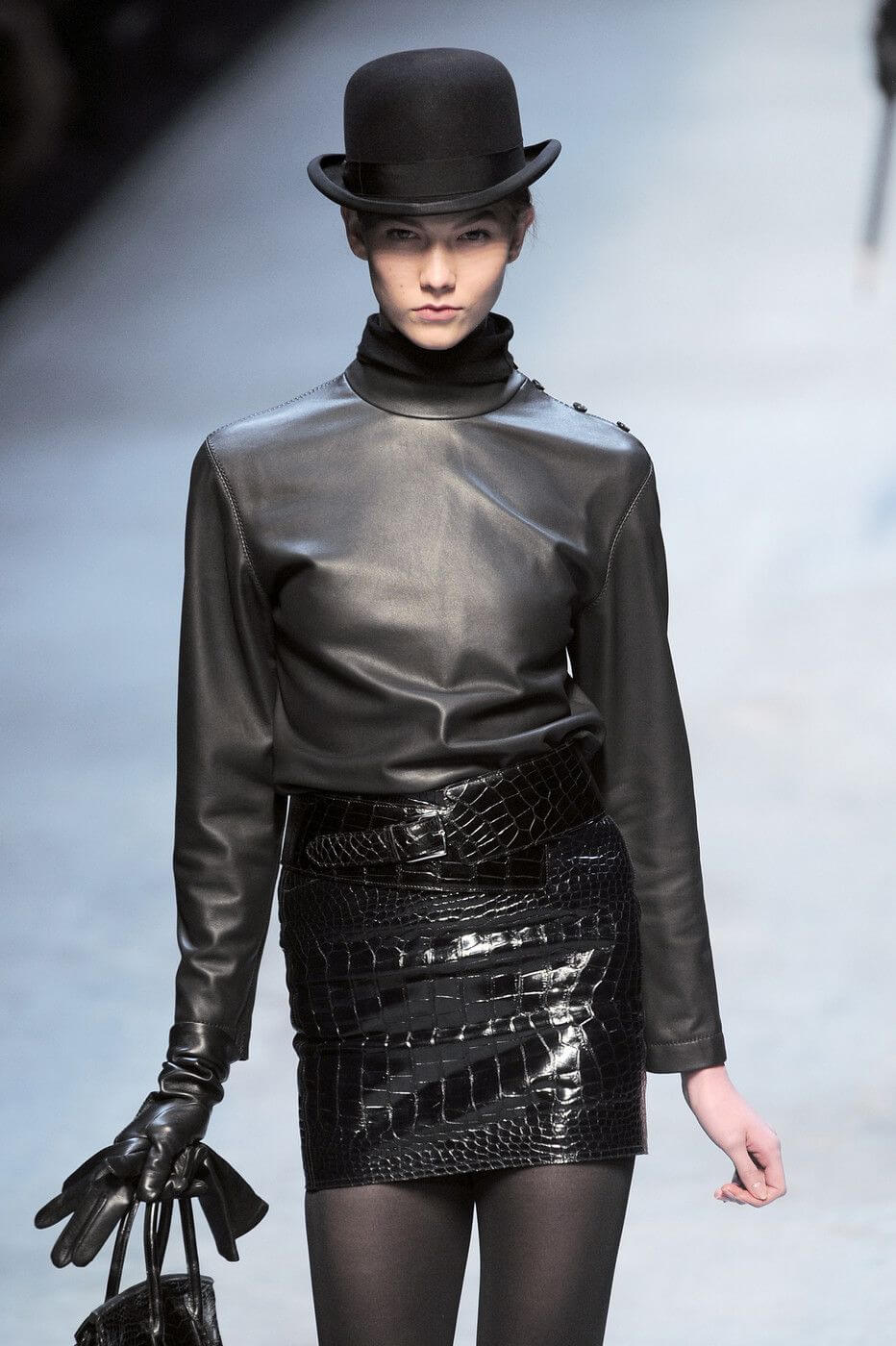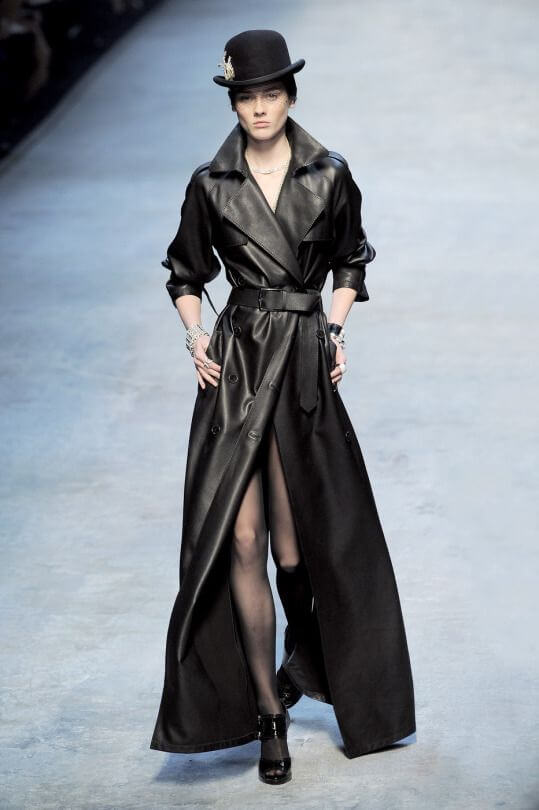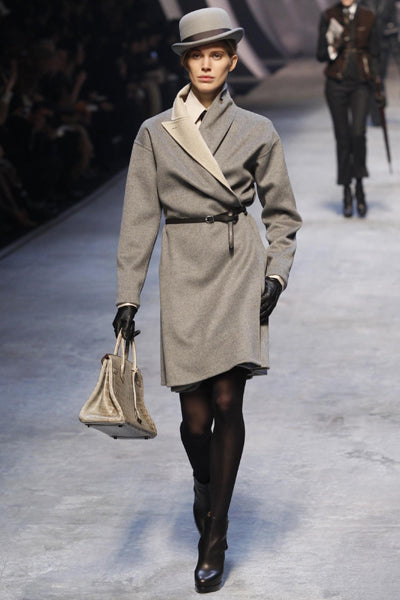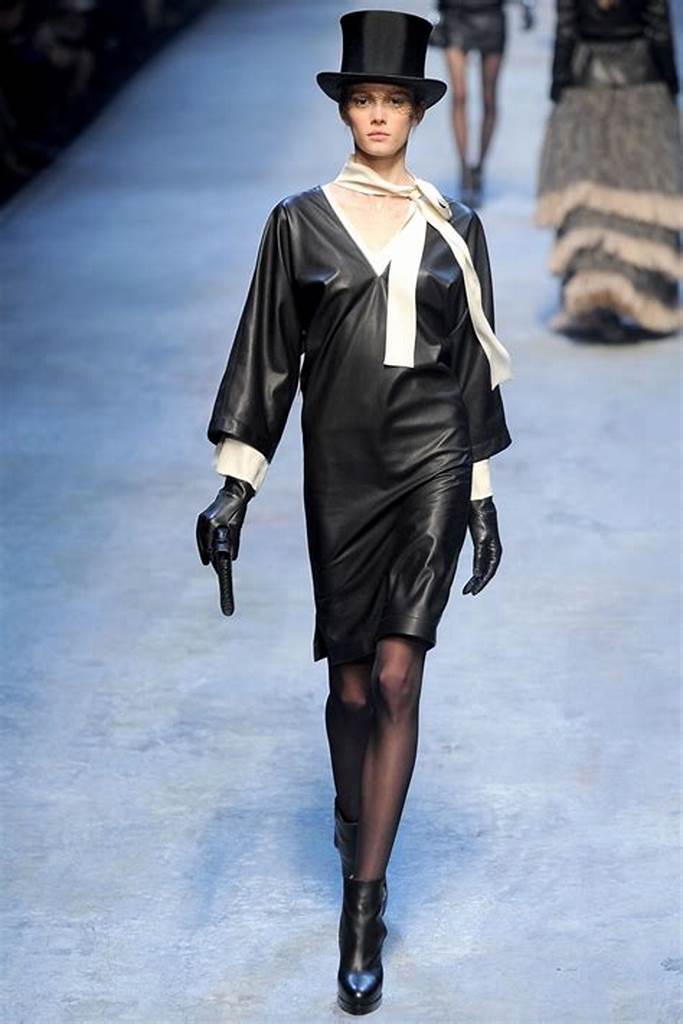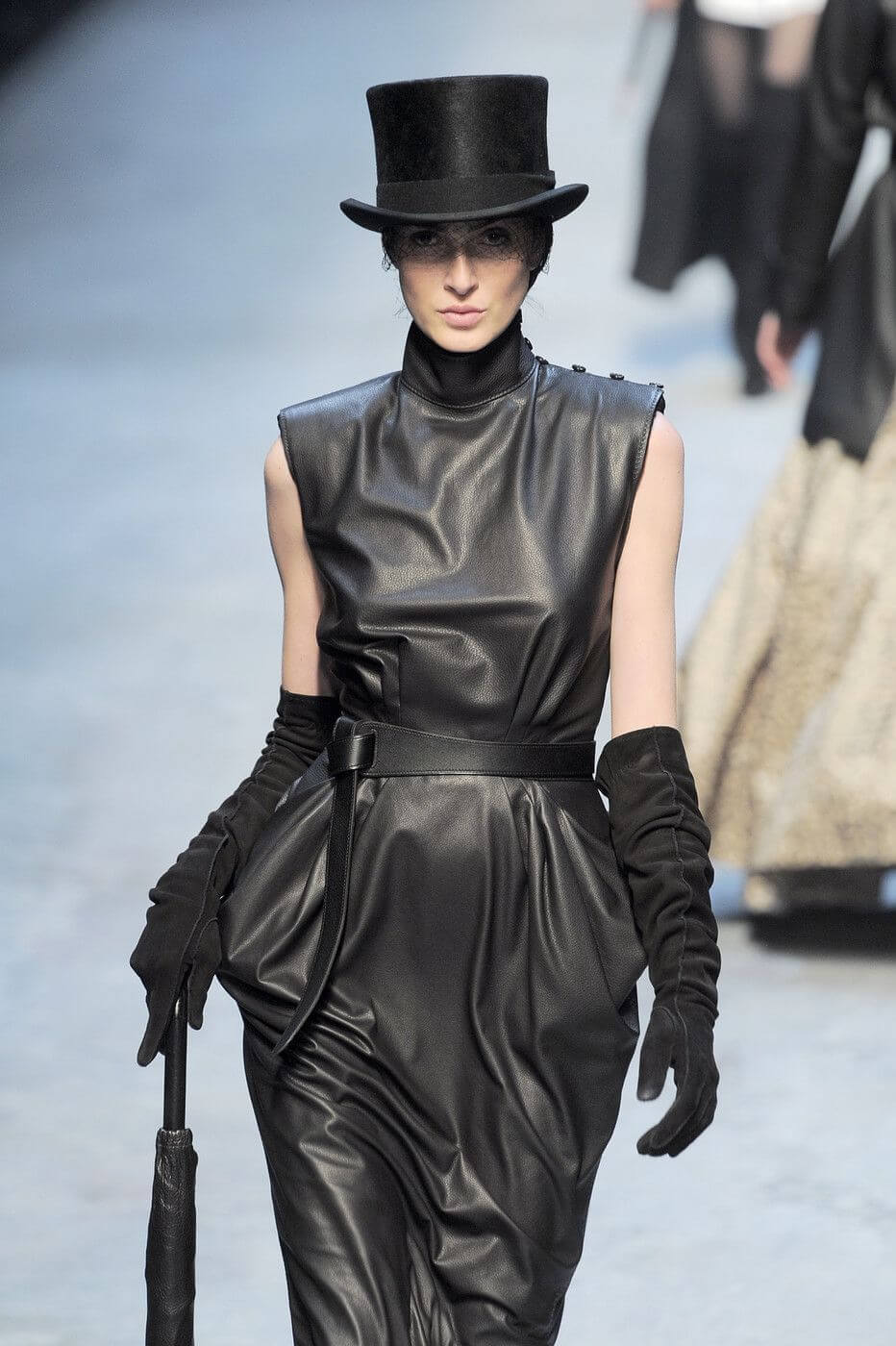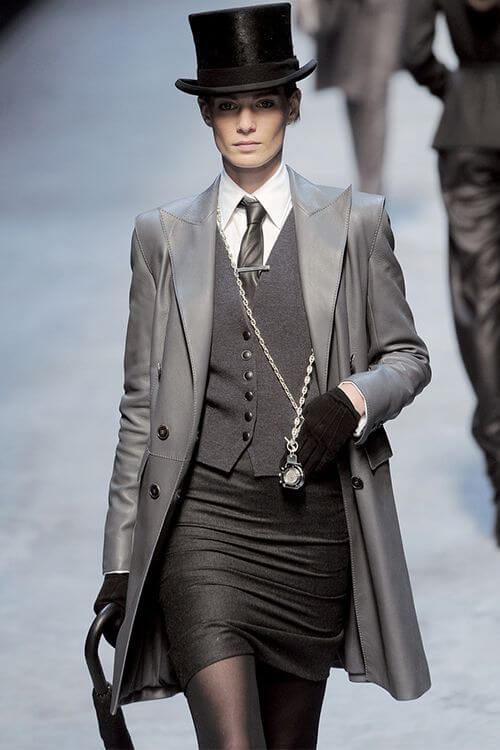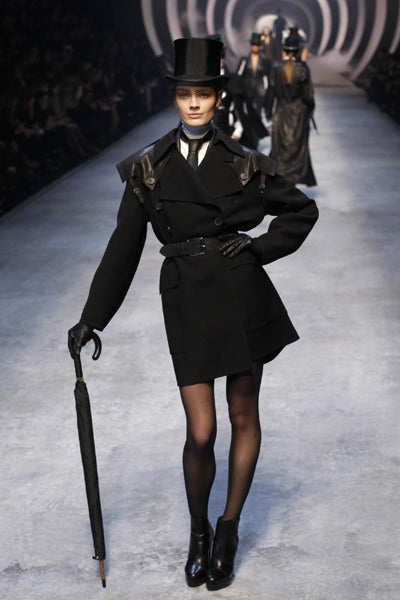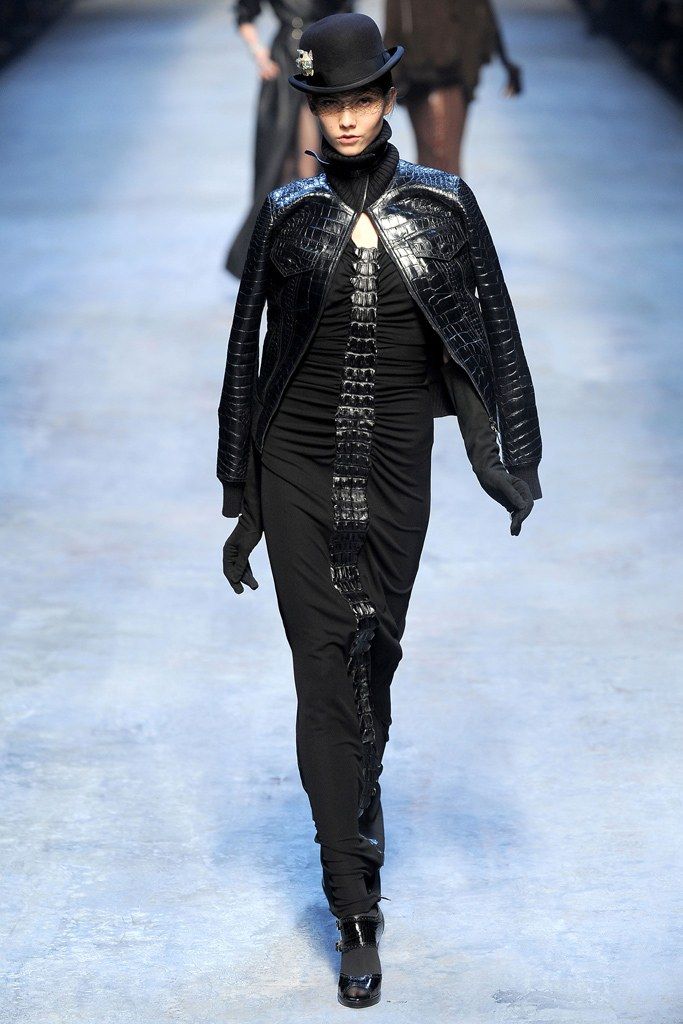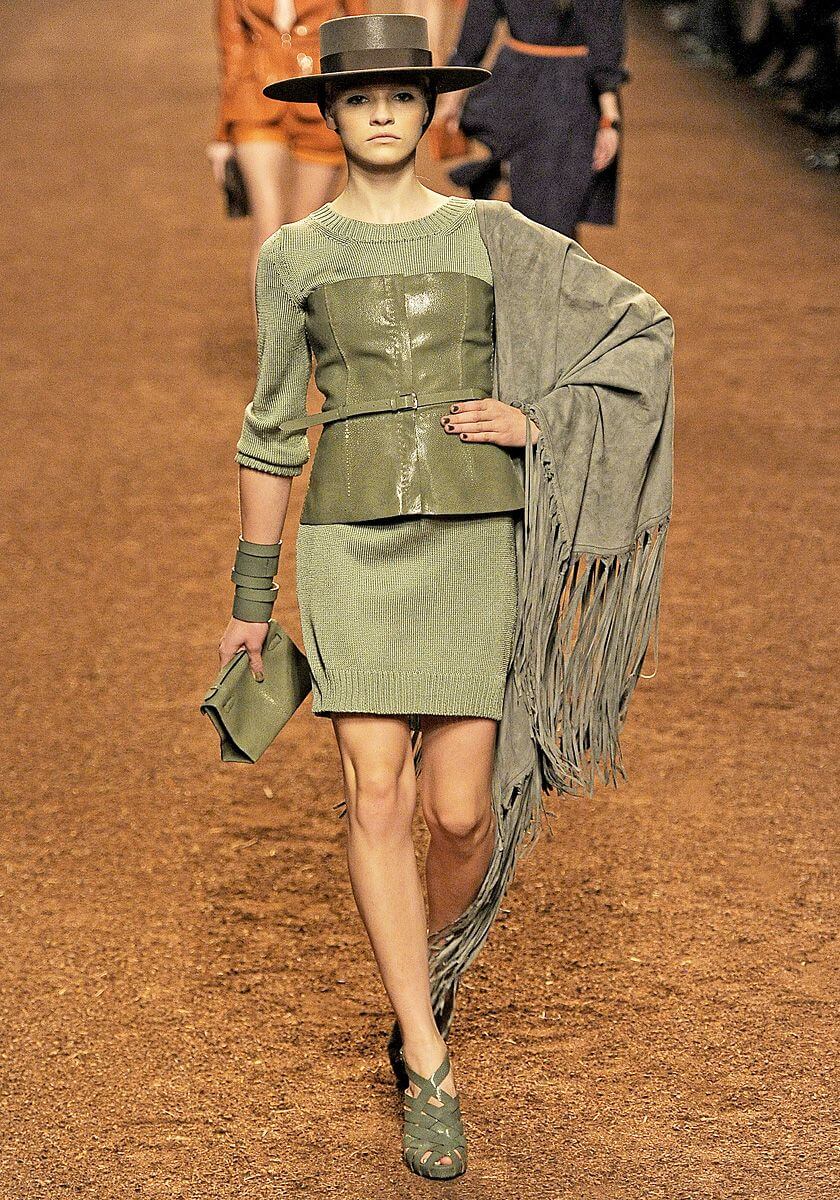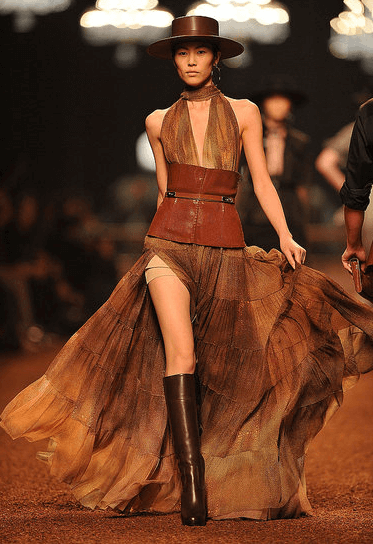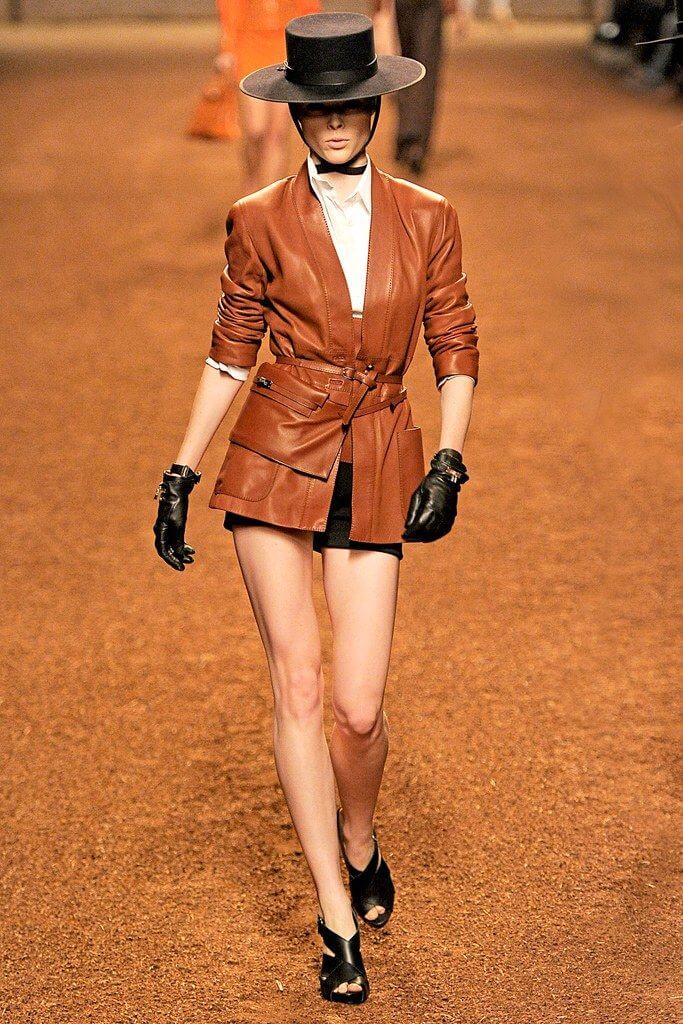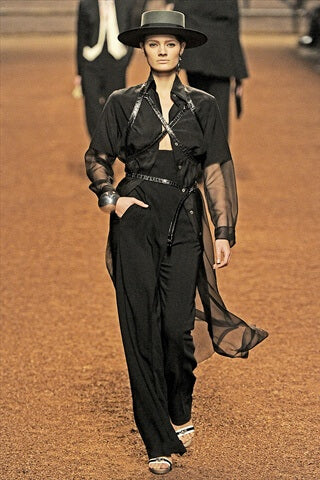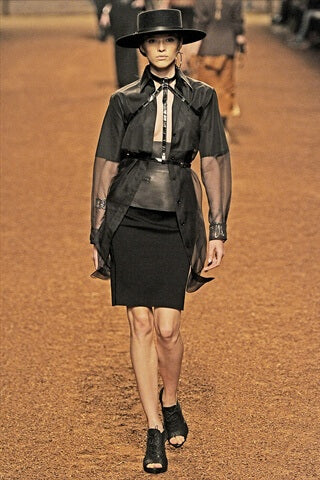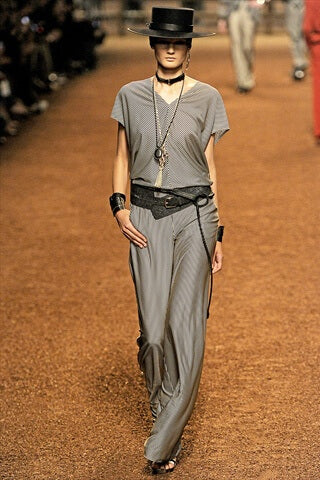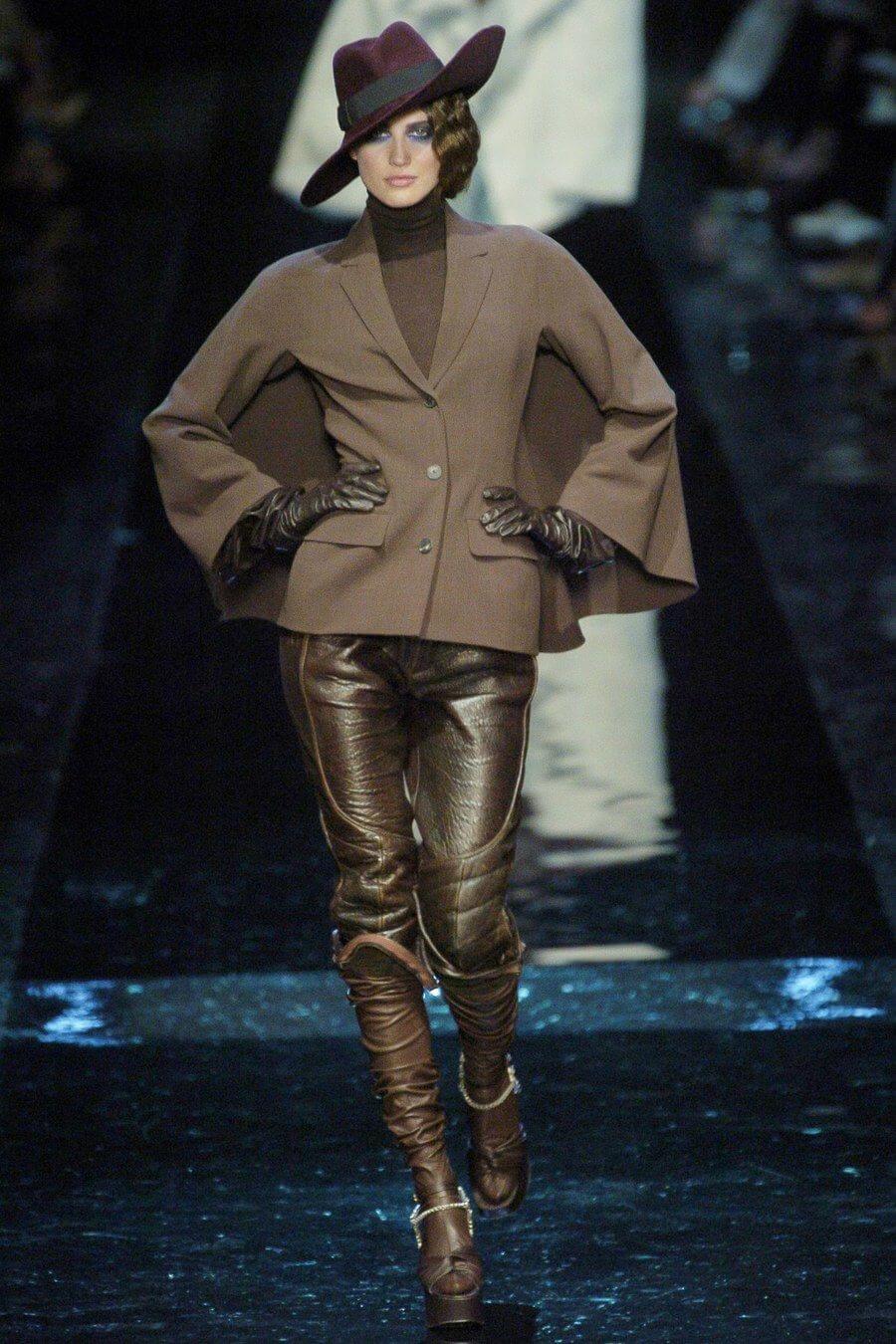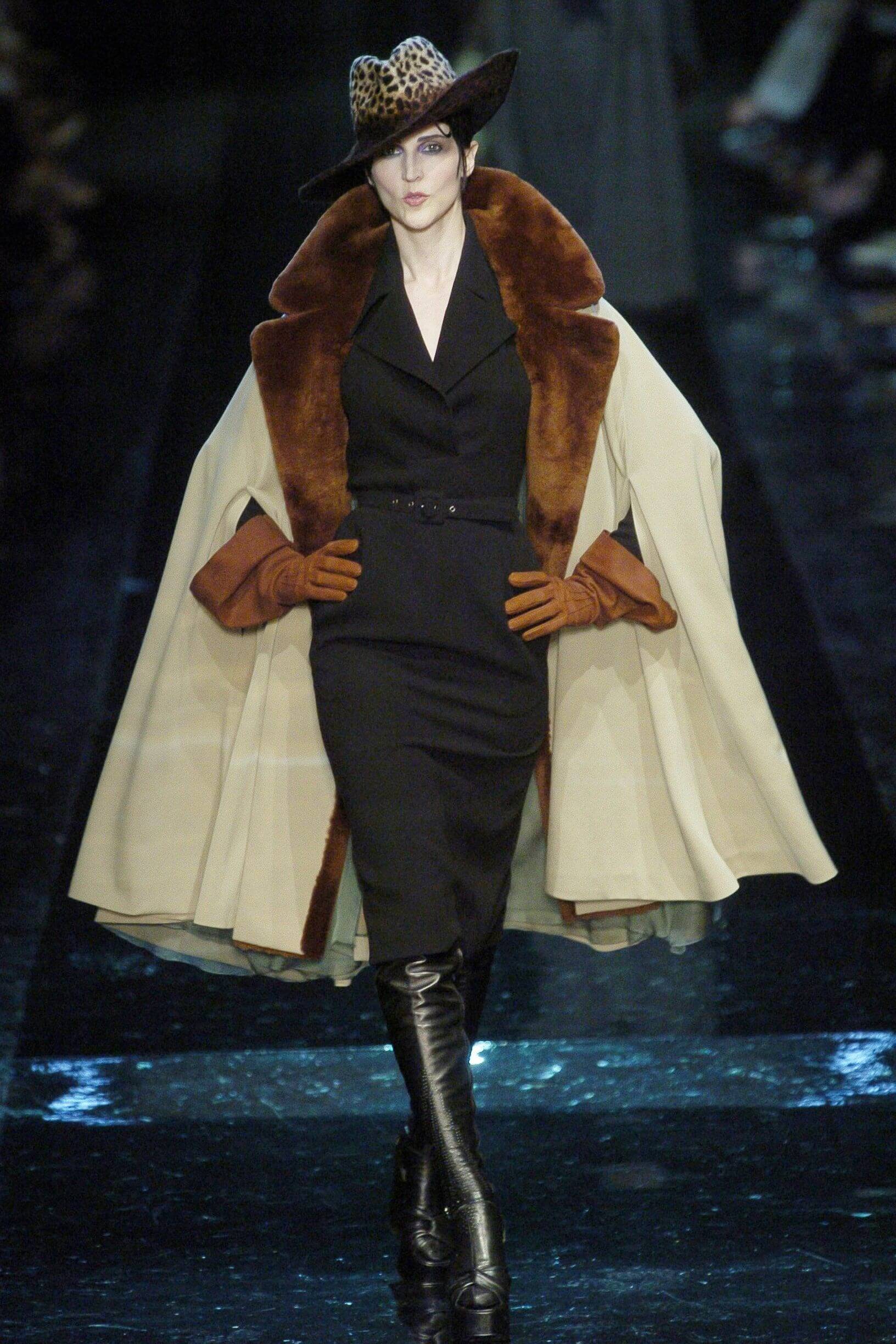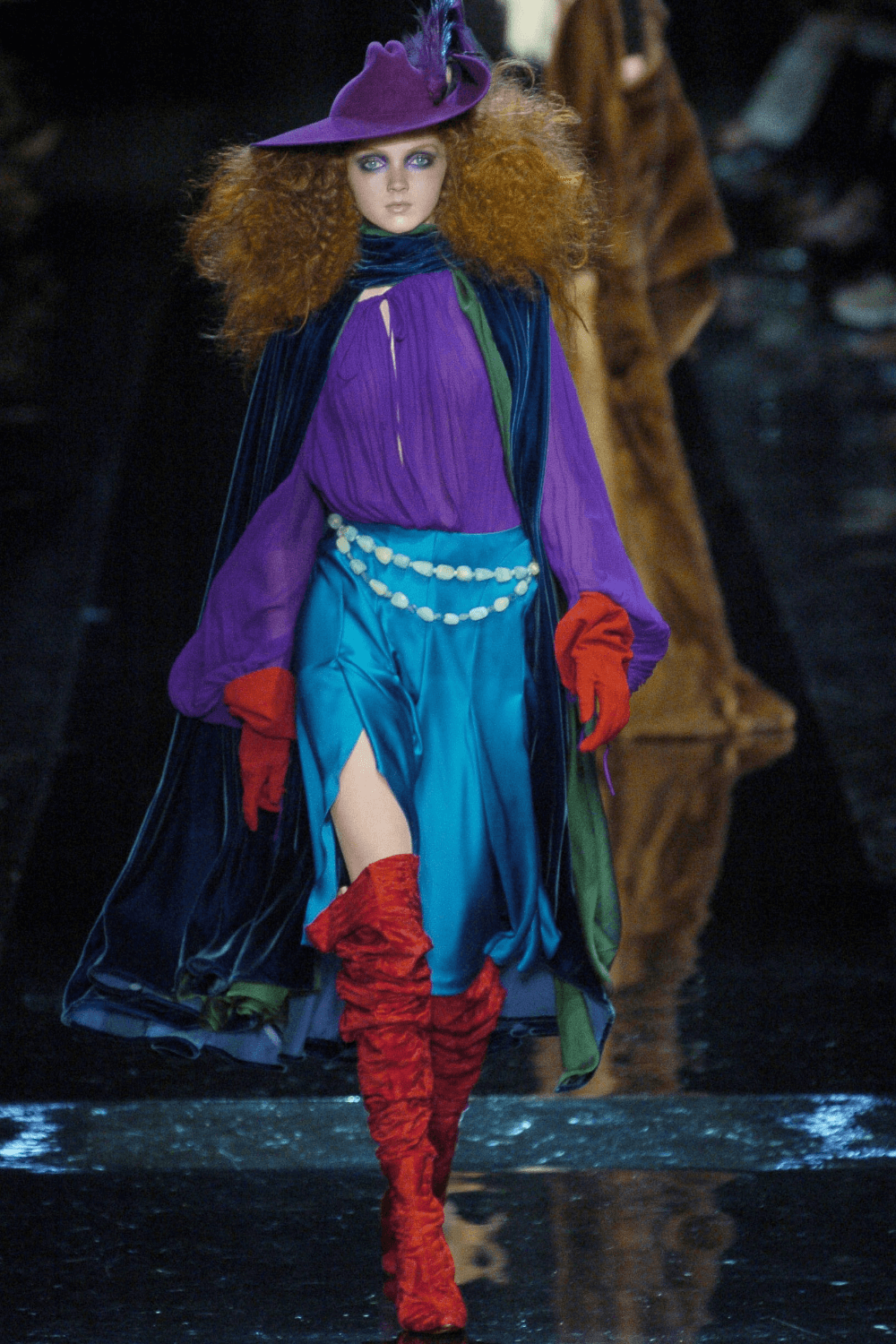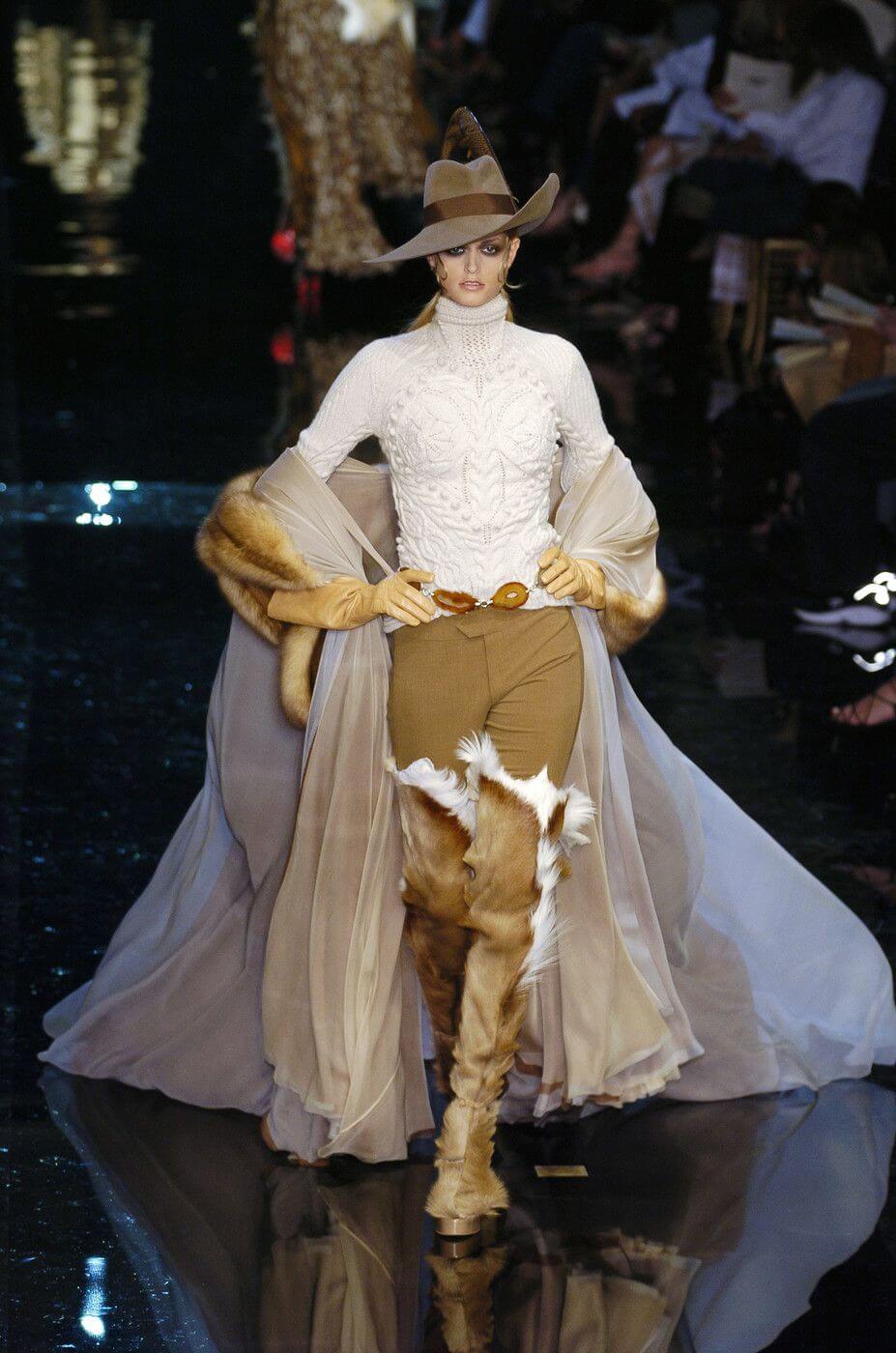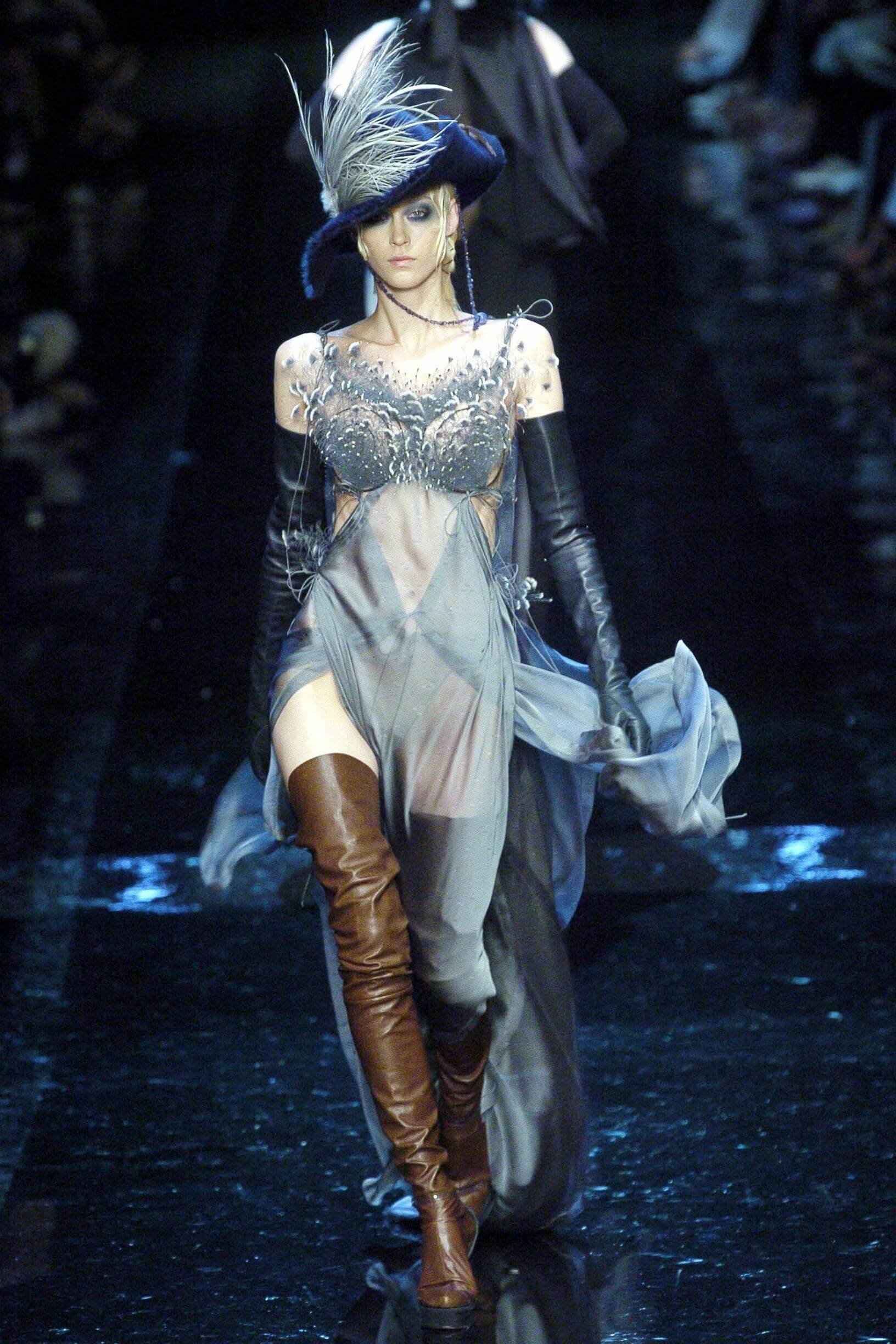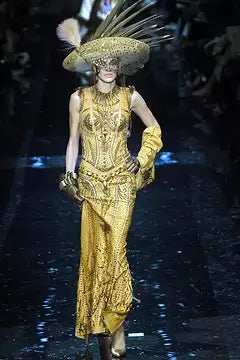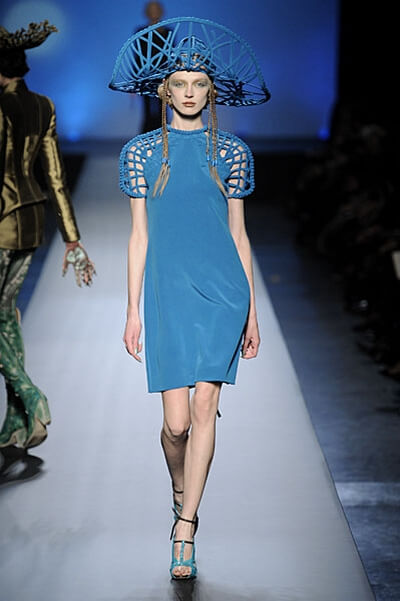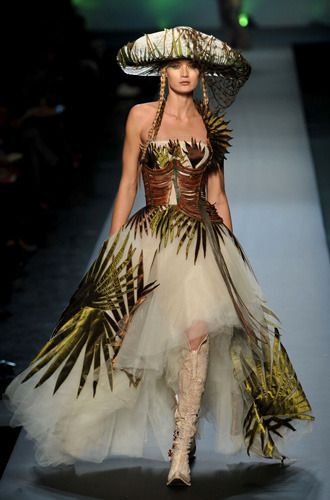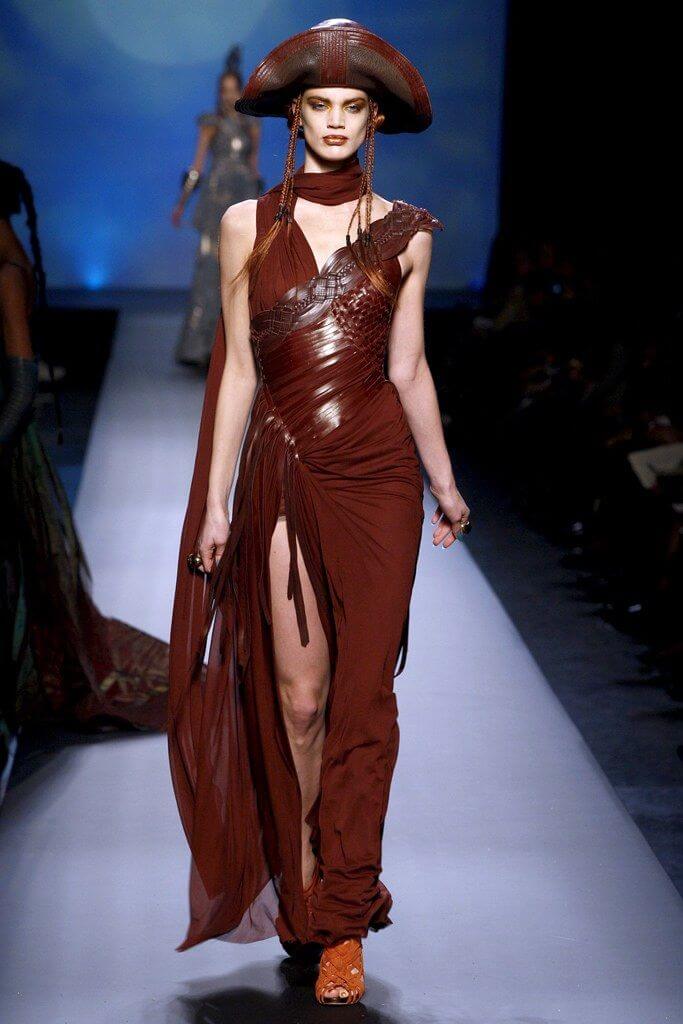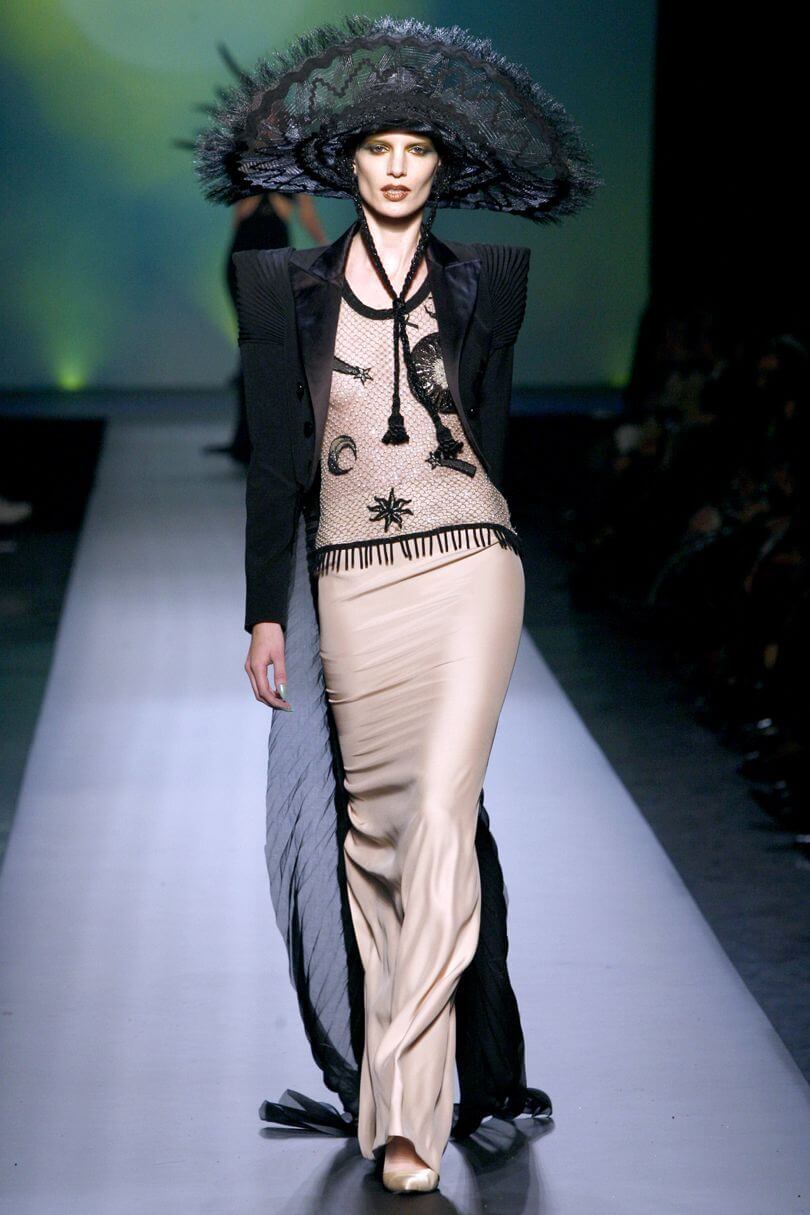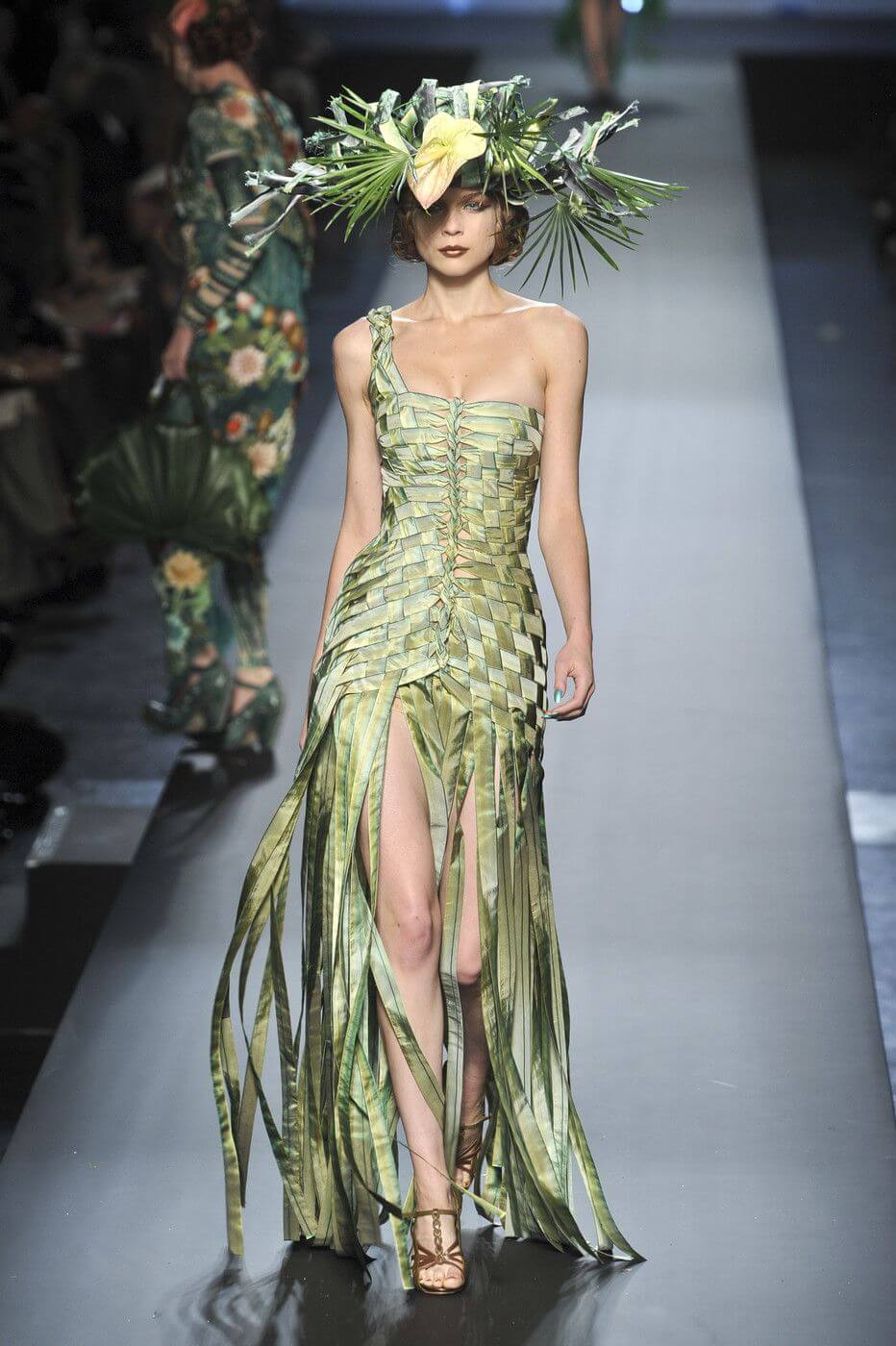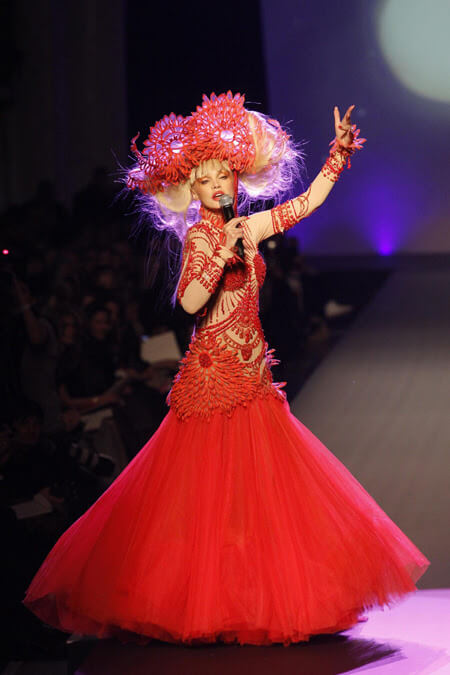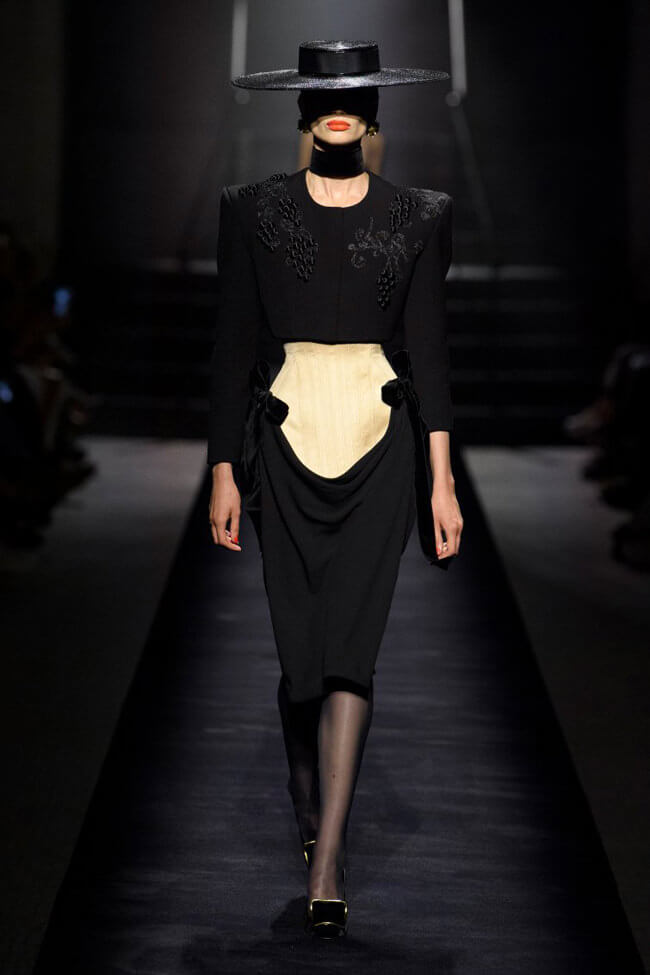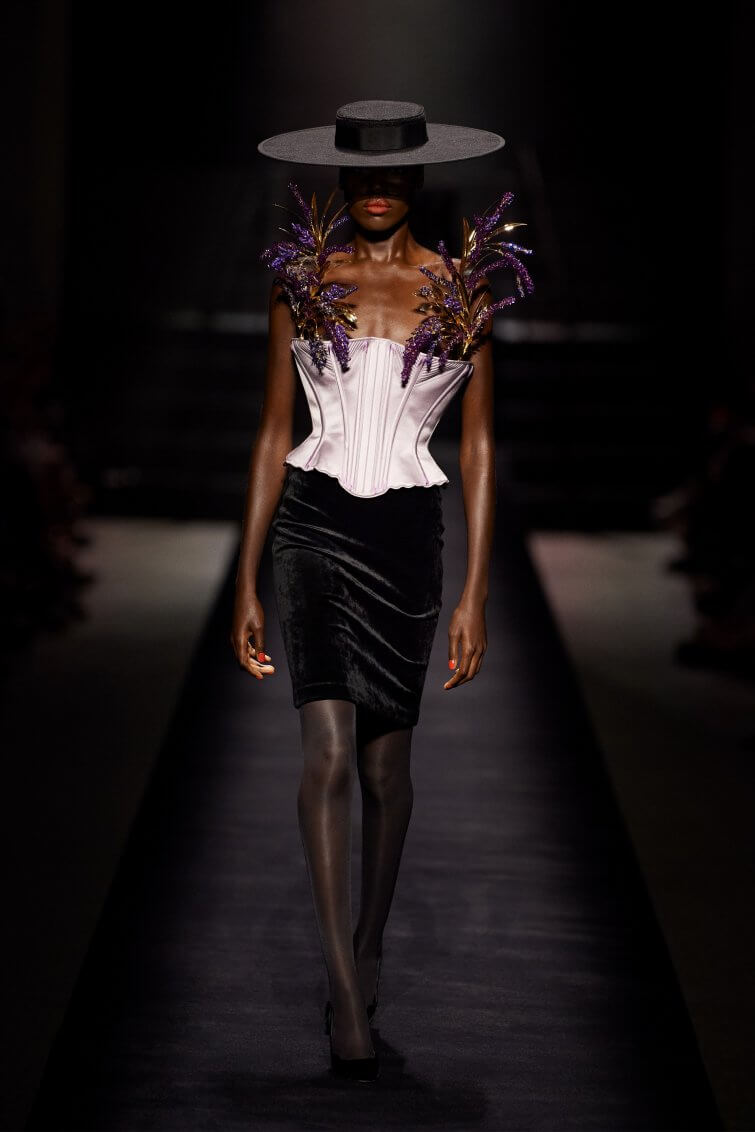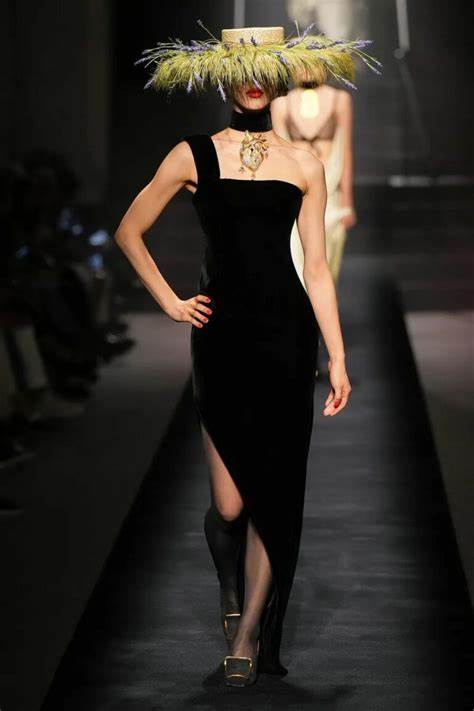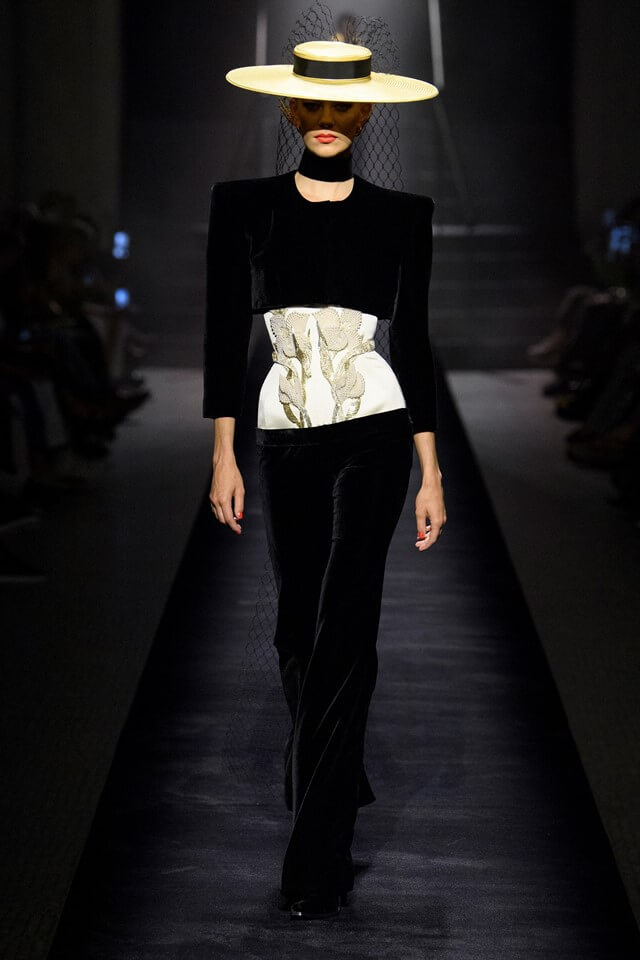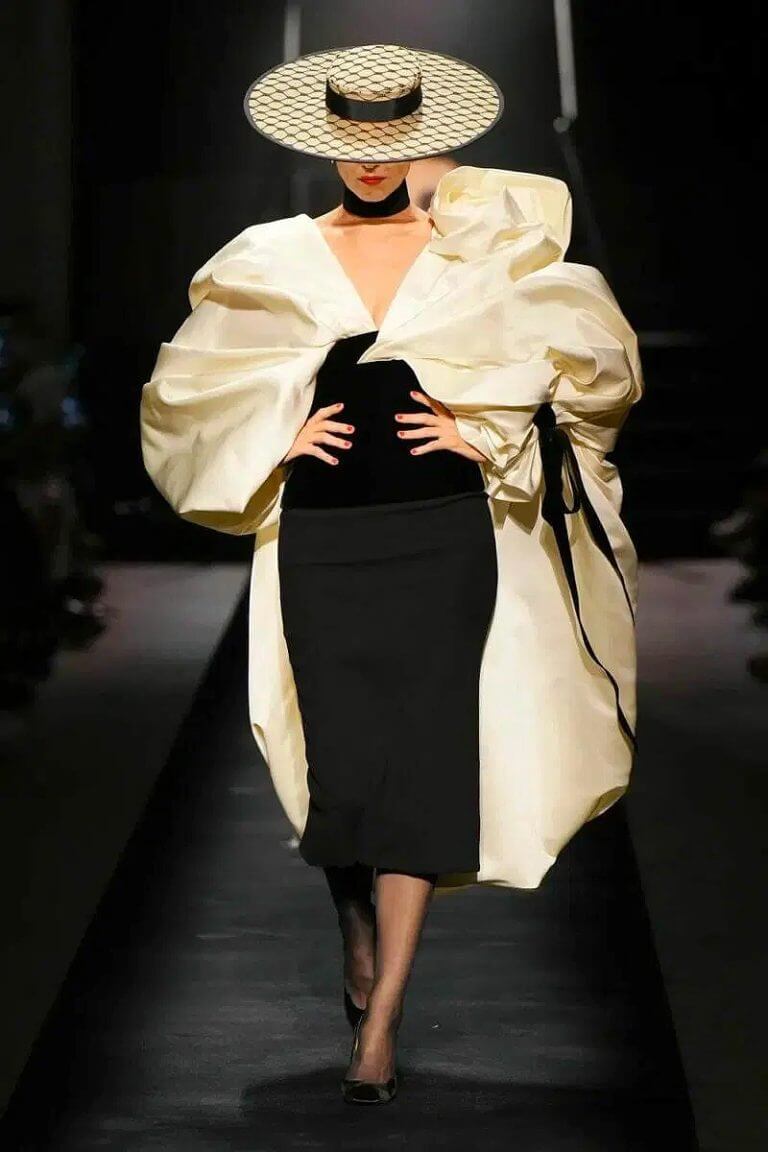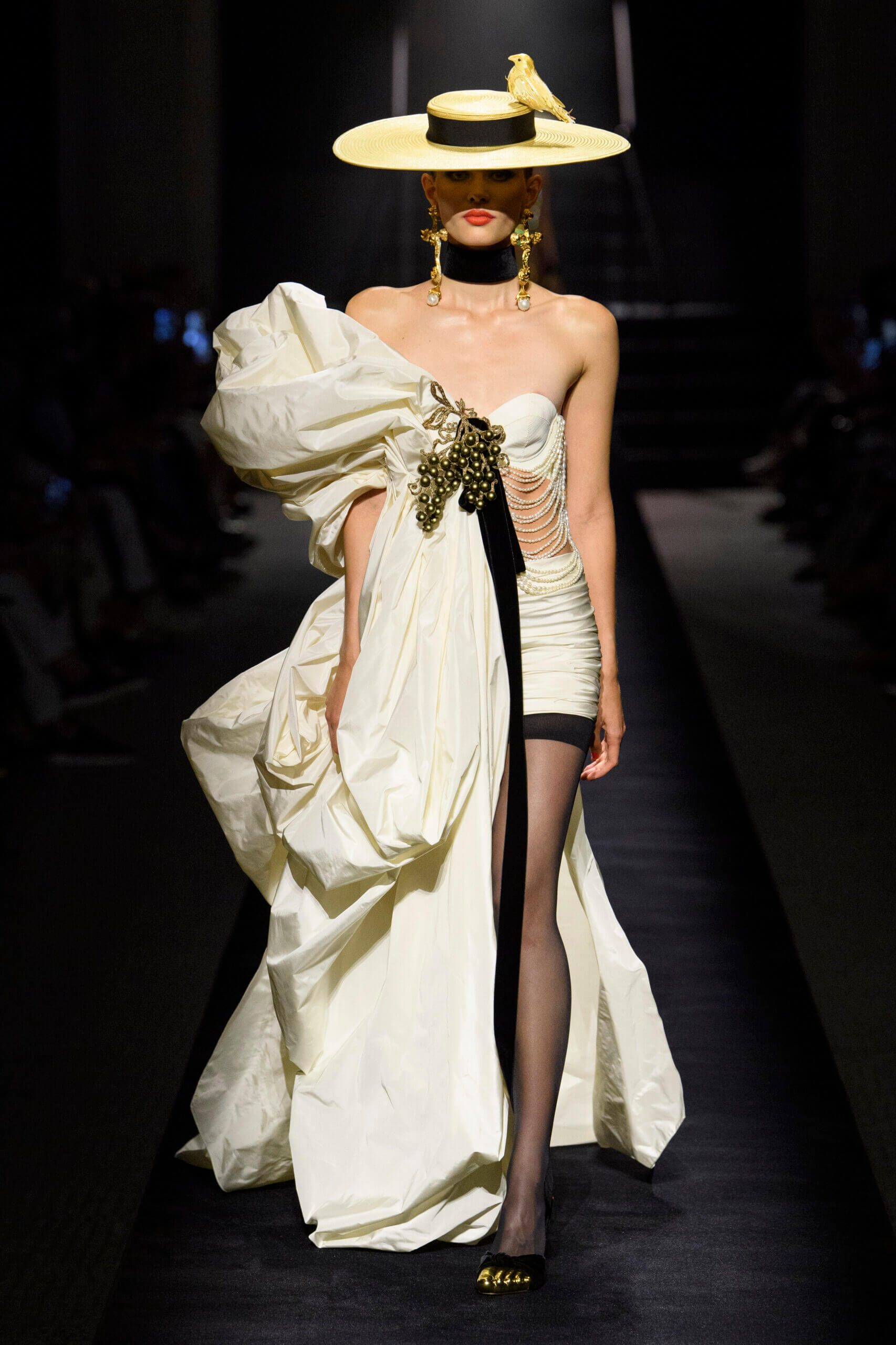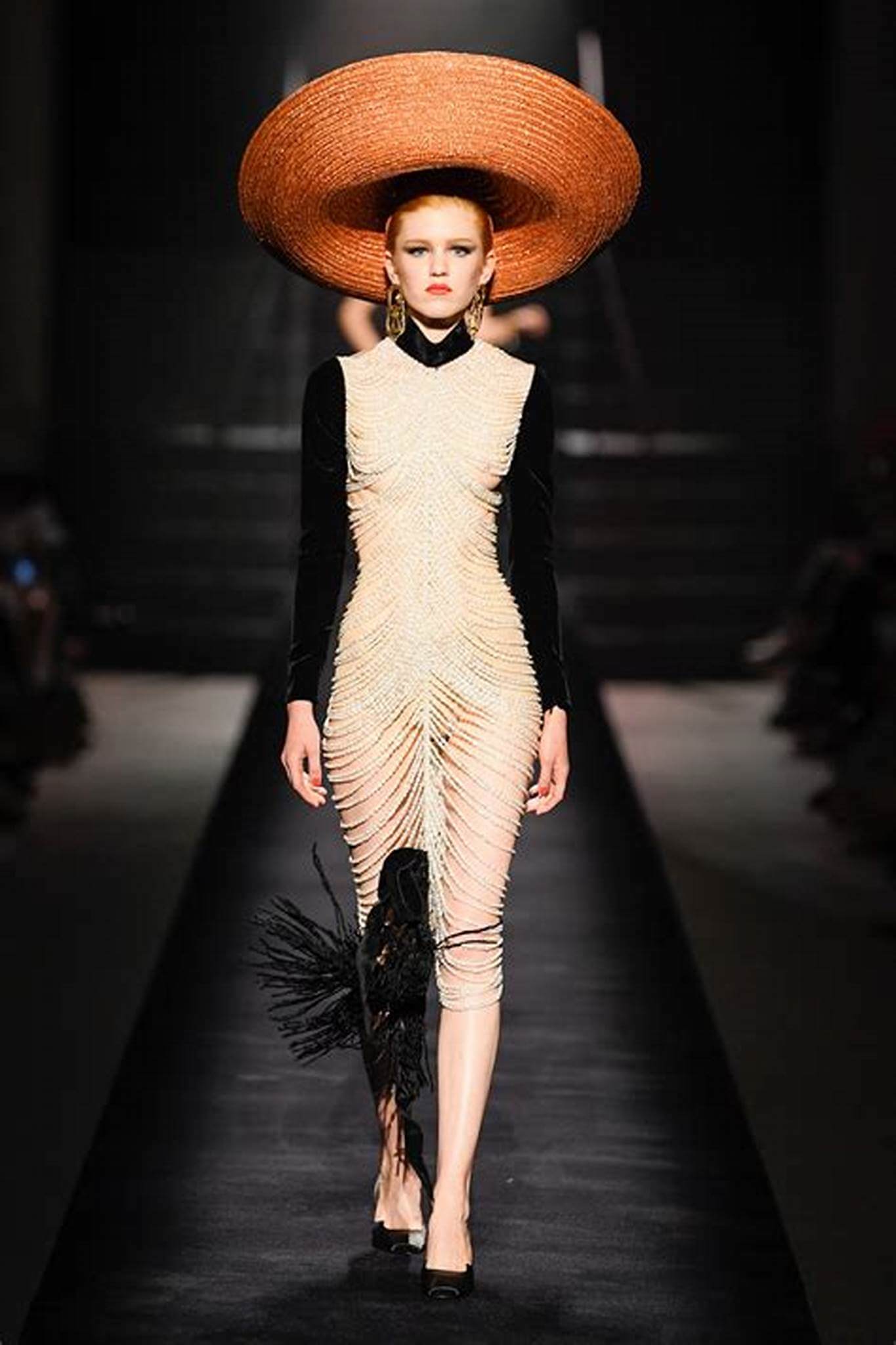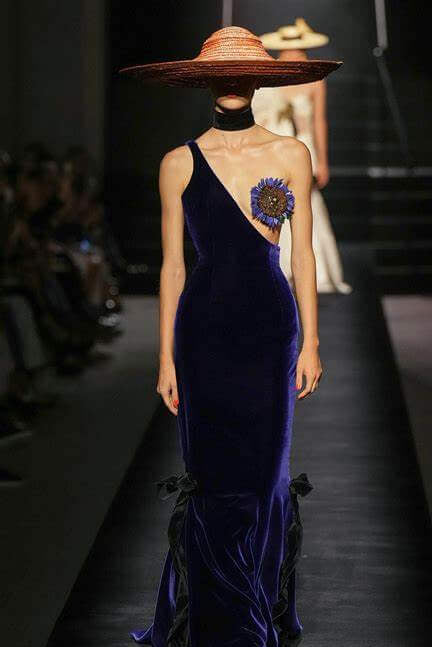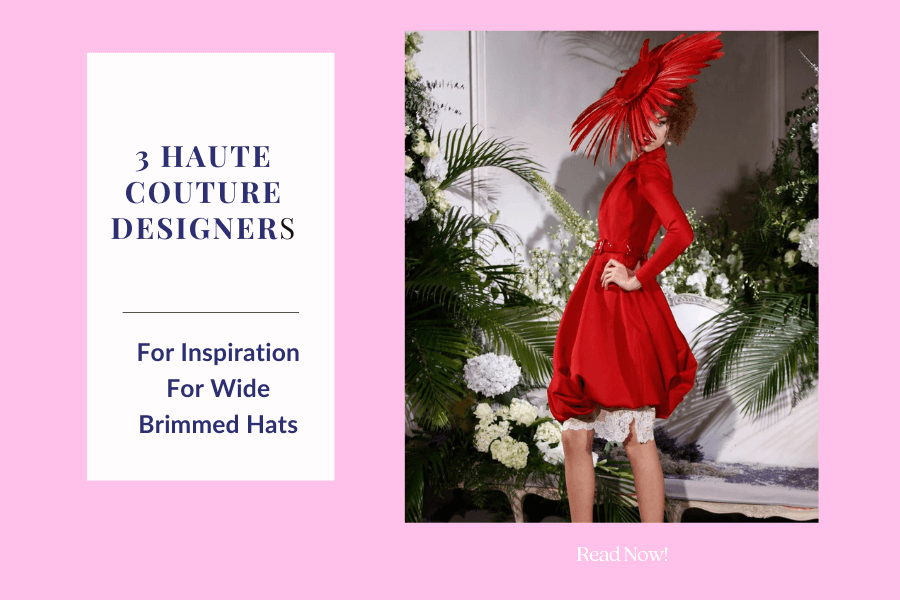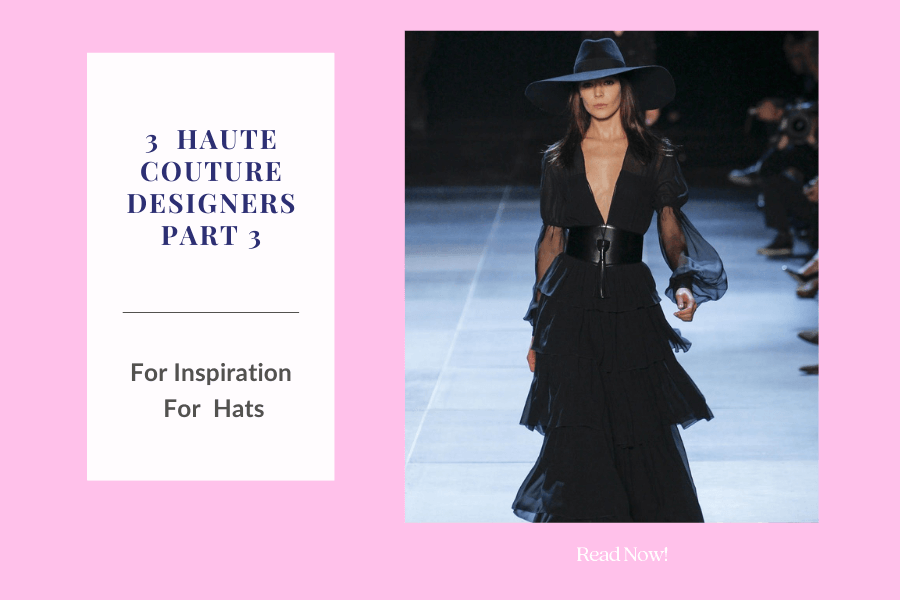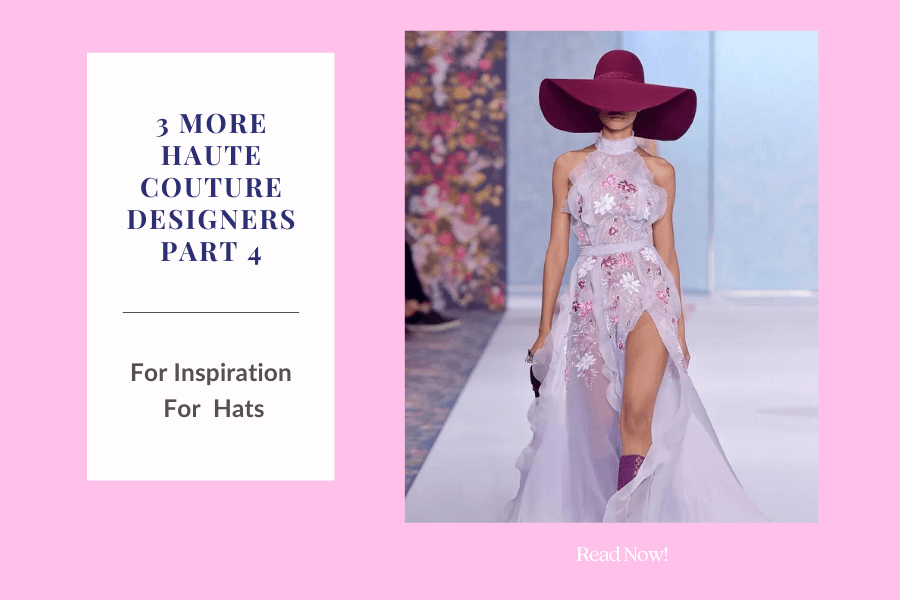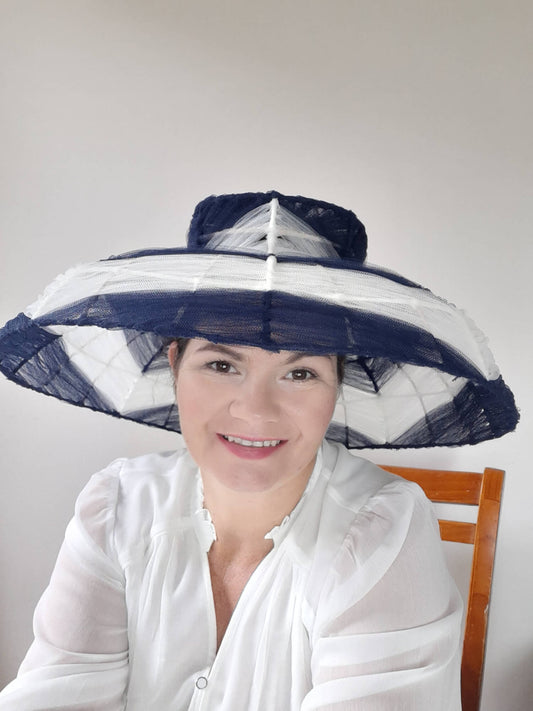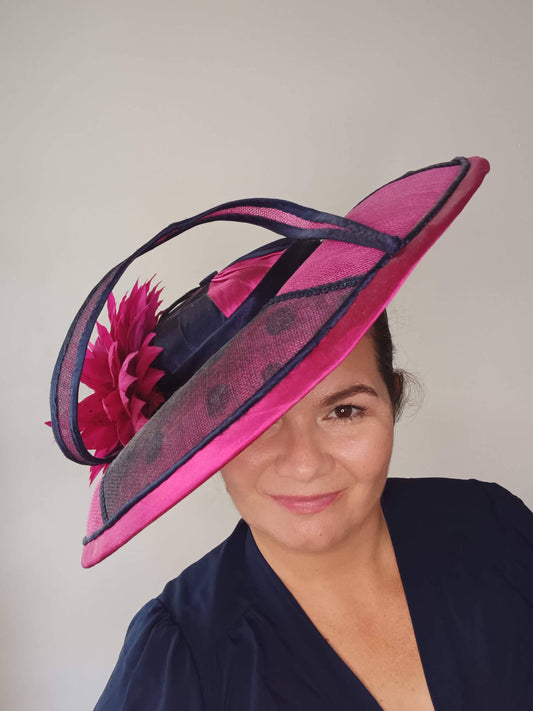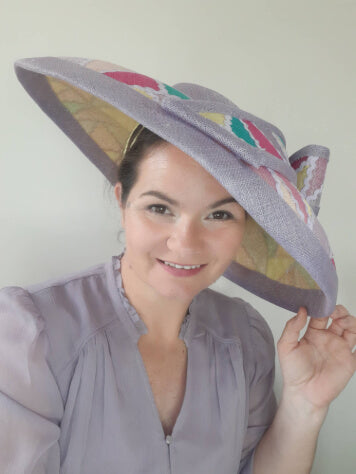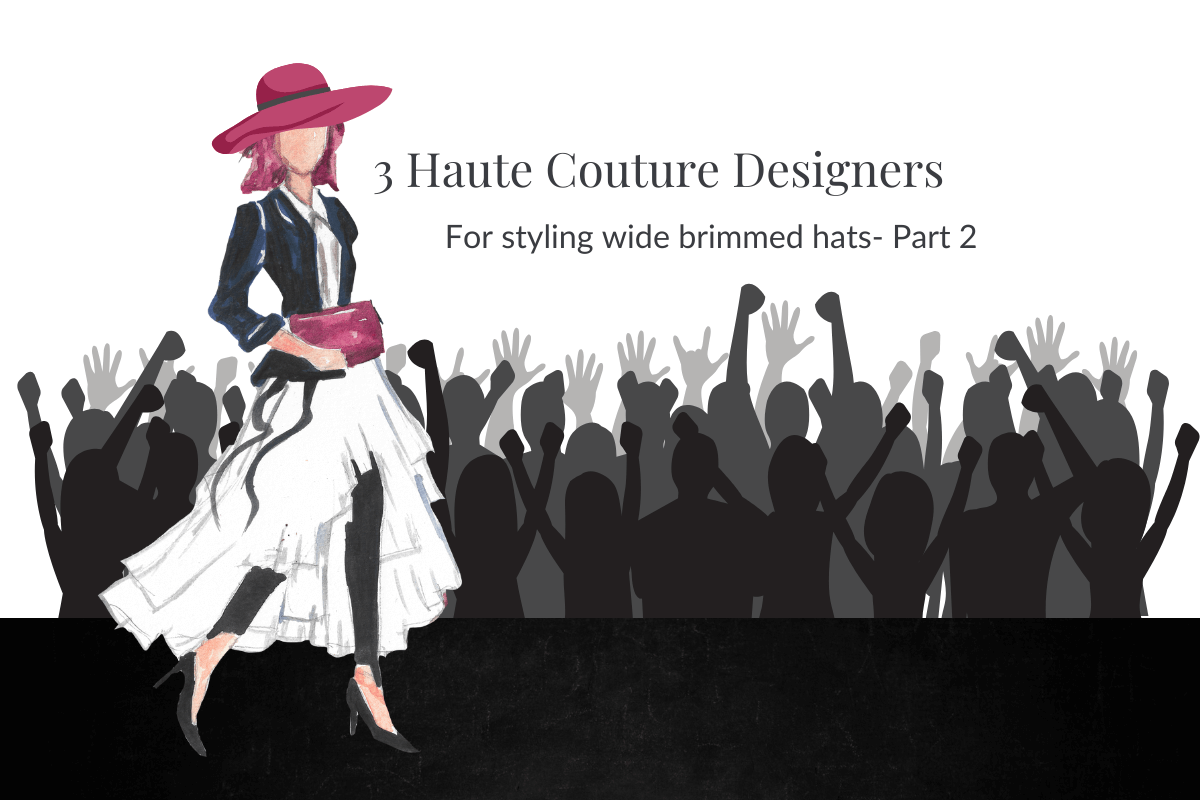
Two years ago, I shared how catwalks became my go-to source for millinery inspiration—how the intricate beading, dramatic silhouettes, and impeccable tailoring fueled my passion for fashion and design.
Back then, I immersed myself in the works of designers like Dior, Chanel, and Valentino, learning to spot trends, dissect designs, and fuel my creativity. And now, as I continue my millinery journey, I find myself returning to the catwalks for fresh ideas, captivated by the evolving artistry that graces the runways.
In this next installment of my millinery series, I’m delving into the world of three iconic houses: Hermès, Jean Paul Gaultier, and Schiaparelli. These designers are masters of creating not just beautiful clothes, but entire worlds of imagination. From the timeless elegance of Hermès to the avant-garde flair of Gaultier and the surreal beauty of Schiaparelli, each offers a treasure trove of styling ideas for any milliner or fashion lover. If you’re looking to elevate your hat game, get ready to take notes on how these iconic houses bring their creations to life with head-turning designs, unique accessories, and captivating details that set the tone for the season ahead. Whether you’re drawn to the opulence of Hermès or the audacity of Schiaparelli, these catwalks have it all—and they’ll show you how to turn a simple hat into a showstopper.
Let's start with Hermes.
The Legacy of Hermès: A Journey from Craftsmanship to Couture
Hermès, a name synonymous with luxury, craftsmanship, and timeless elegance, was born in 1837, founded by Thierry Hermès in Paris. Originally dedicated to crafting fine harnesses and bridles for European noblemen, the brand’s commitment to quality and attention to detail won it numerous accolades, including multiple awards at the Expositions Universelles in Paris. From the very beginning, Hermès understood the importance of creating products that not only served a functional purpose but also exuded refinement and beauty.
As the years passed, the company expanded its reach and began to innovate, introducing iconic pieces that would become staples of the fashion world. In the 1930s, Hermès ventured into creating high-end leather accessories, like the “Sac à dépêches,” which would later be renamed the legendary Kelly bag after the actress Grace Kelly. The introduction of the Hermès carrés (square scarves) in 1937 marked another cultural milestone, with these scarves quickly becoming synonymous with French chic.
Hermès continued to push boundaries throughout the 20th century, releasing its first couture collection for women in 1929, establishing a presence in the United States in 1924, and launching the first-ever Hermès perfume, "Eau d'Hermès," in 1949. By the mid-1930s, the company began collaborating with Swiss watchmaker Universal Genève to create exclusive timepieces, showcasing Hermès’ evolution from leather goods to full luxury fashion.
The brand’s philosophy under the leadership of Émile-Maurice Hermès—“leather, sport, and a tradition of refined elegance”—has defined its legacy to this day. Its iconic products, from saddles to handbags and scarves, have made Hermès an enduring symbol of sophistication and status. Through its dedication to craftsmanship, the brand has transcended trends, continuing to inspire not only the fashion world but the way we view luxury itself.
Today, Hermès remains a beacon of innovation and artistry, blending its rich history with contemporary designs that continue to define what it means to be timelessly chic.
Hermes FW 2010
Hermes Fall Winter 2010
Hermes Spring 2011
Hermes Spring 2011
Jean Paul Gaultier: The Enfant Terrible of Fashion
Jean Paul Gaultier, born on June 24, 1952, in Arcueil, France, is a fashion icon whose impact on haute couture and prêt-à-porter is undeniable. Known for his bold and unconventional designs, Gaultier earned the moniker “enfant terrible” of the fashion world due to his disruptive approach to fashion. From the very beginning of his career, he challenged traditional norms, blending high fashion with street influences and pushing boundaries with his irreverent designs.
Gaultier’s journey into the fashion industry was unique. Largely self-taught, he began sending sketches to famous designers at a young age, eventually catching the eye of Pierre Cardin, who hired him as an assistant in 1970. He went on to work with Jacques Esterel and Jean Patou before founding his own fashion house in 1982. His early designs were known for their unexpected elements, such as plastic trash bag dresses in 1980 and his reinvention of the iconic marinière (striped sailor shirt) for men in 1983.
In 1984, Gaultier introduced the groundbreaking concept of men wearing skirts (kilts), and by 1985, his brand had reached impressive financial success. He revolutionized women’s fashion by introducing the corset with the cone bra, famously worn by Madonna during her 1990 Blond Ambition World Tour. These daring moves solidified Gaultier’s reputation for being a designer who was not afraid to challenge social and gender norms through fashion.
Over the years, Gaultier expanded his empire beyond clothing to include fragrances, launching the wildly successful "Classique" scent in 1993. His designs remained fluid, offering unisex collections like the JPG line in the early '90s and redefining traditional ideas of masculinity and femininity. Gaultier’s collaborations, such as designing costumes for films like The Fifth Element (1997) and Bad Education (2004), further demonstrated his versatility and ability to bring high fashion to new arenas.
A major turning point in Gaultier’s career came in 2003 when he was appointed as the creative director for Hermès, where he remained until 2010. His time at Hermès allowed him to bring his innovative approach to the luxury house, creating a blend of timeless elegance and avant-garde spirit. By 2014, Gaultier announced that he would retire from ready-to-wear to focus solely on haute couture, with his final runway show in January 2020 marking the end of an era.
Throughout his illustrious career, Gaultier has been more than just a designer—he’s been a cultural force. His work is known for breaking boundaries, celebrating diversity, and embracing individuality. From his iconic corsets to his embrace of gender fluidity, Gaultier’s creations have challenged the status quo and left an indelible mark on the fashion world. His legacy is not just in the clothes he created but in the way he reshaped the way we think about fashion itself.
Gaultier 2004
Gaultier 2004
Gaultier 2010
Zuhair Murad Haute Couture Spring Summer 2023
Schiaparelli
Established in post-war Paris, Pierre Balmain's eponymous
fashion house played a pivotal role in revolutionising French style. Balmain's
inaugural show in October 1945, preceding Christian Dior's 'New Look' by two
years, introduced figure-enhancing silhouettes that featured bell-shaped skirts
cinched at the waist. By 1947, Balmain had emerged as a globally influential
powerhouse, leading the way in fashion's newfound liberation. To this day,
Pierre Balmain's iconic style codes, exemplified by the 'Jolie Madame'
aesthetic, remain at the core of the brand, with the distinctive tailored
Balmain jackets retaining the timeless shape of their 1940s predecessors.
Over the years, Balmain has been guided by seven additional
Heads of Design following Pierre Balmain's illustrious reign. In 1994, the
renowned Dominican designer Oscar de la Renta brought his own interpretation of
elegance to the house with his highly acclaimed debut couture collection. While
de la Renta's designs were beautiful, they leaned towards a more conventional
expression of femininity and did not take the same bold risks as the
contemporary Balmain we witness today.
In 2011, Olivier Rousteing, at the young age of 25, joined
Balmain as the Head Designer with a clear intention: to revitalise Pierre
Balmain's design principles for the modern woman. Rousteing embarked on his
career at the age of 18 as a graduate intern at Roberto Cavalli, eventually
rising through the ranks to become one of Head Designer Peter Dundas' standout
protégés. Recognized as a visionary, Rousteing's collections for Roberto
Cavalli showcased his ability to balance his avant-garde inclinations with the
label's penchant for opulence, a skill he would continue to master at Balmain.
Rousteing's creations at Balmain celebrated the allure of
the female form, with sensual necklines and a meticulous attention to detail.
The first half of his range presented dynamic black-and-white ensembles for the
modern woman, incorporating contemporary materials with a lavish sheen. Vibrant
teal mohair outfits followed suit, alongside aviation-inspired checkered
uniforms, lightweight summer dresses, and resplendent silk evening wear that
radiated regal elegance under the spotlight. Furthermore, Rousteing's masterful
craftsmanship brought garments to life with pearl accents, intricately
outlining the human proportions, while others blossomed with sheer coatings
that unveiled delicate figures beneath. Notably, his structurally designed hats
harmonised beautifully with the tailored yet opulent fabrics showcased in his
Autumn/Winter 2023/24 catwalk show
Schiaparelli AW 2022/2023
Schiaparelli AW 2022/2023
As we’ve explored the catwalks of Hermès, Jean Paul Gaultier, and Schiaparelli, it’s clear that these designers don’t just create clothing—they craft entire narratives, blending artistry, craftsmanship, and boldness in every piece. Their innovative use of millinery, whether through sculptural shapes, daring colors, or surreal details, offers endless inspiration for anyone looking to elevate their hat game. Whether you’re aiming for timeless elegance, avant-garde experimentation, or whimsical sophistication, the lessons from these legendary catwalks are invaluable.
But this is just the beginning. If you missed Part 1, where we delved into the show-stopping designs of Dior, Zuhair Murad, and Balmain, be sure to catch up. And don’t miss Part 3, where we’ll continue to explore more iconic designers—Yves Saint Laurent, Valentino, and Chanel—and discover even more ways to incorporate their fashion-forward millinery inspirations into your own wardrobe. Stay tuned for more creative styling ideas!
All images and videos courtesy of Google and YouTube

About the Author
Melissa Rath is an Australian milliner creating unique, handcrafted hats. She shares insights on design, styling, colour theory, the history of hats and all things millinery.
Featured collection
-
Navy and White Wire Frame Tulle Hat by Melissa Rath Millinery
Regular price $450.00 AUDRegular priceUnit price / per -
Pink and Navy Wide Brim Picture Hat by Melissa Rath Millinery
Regular price $380.00 AUDRegular priceUnit price / per -
Patchwork Wide Brim Millinery Hat by Melissa Rath Millinery
Regular price $450.00 AUDRegular priceUnit price / per

